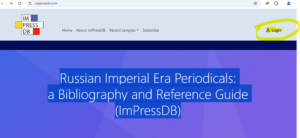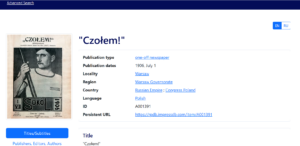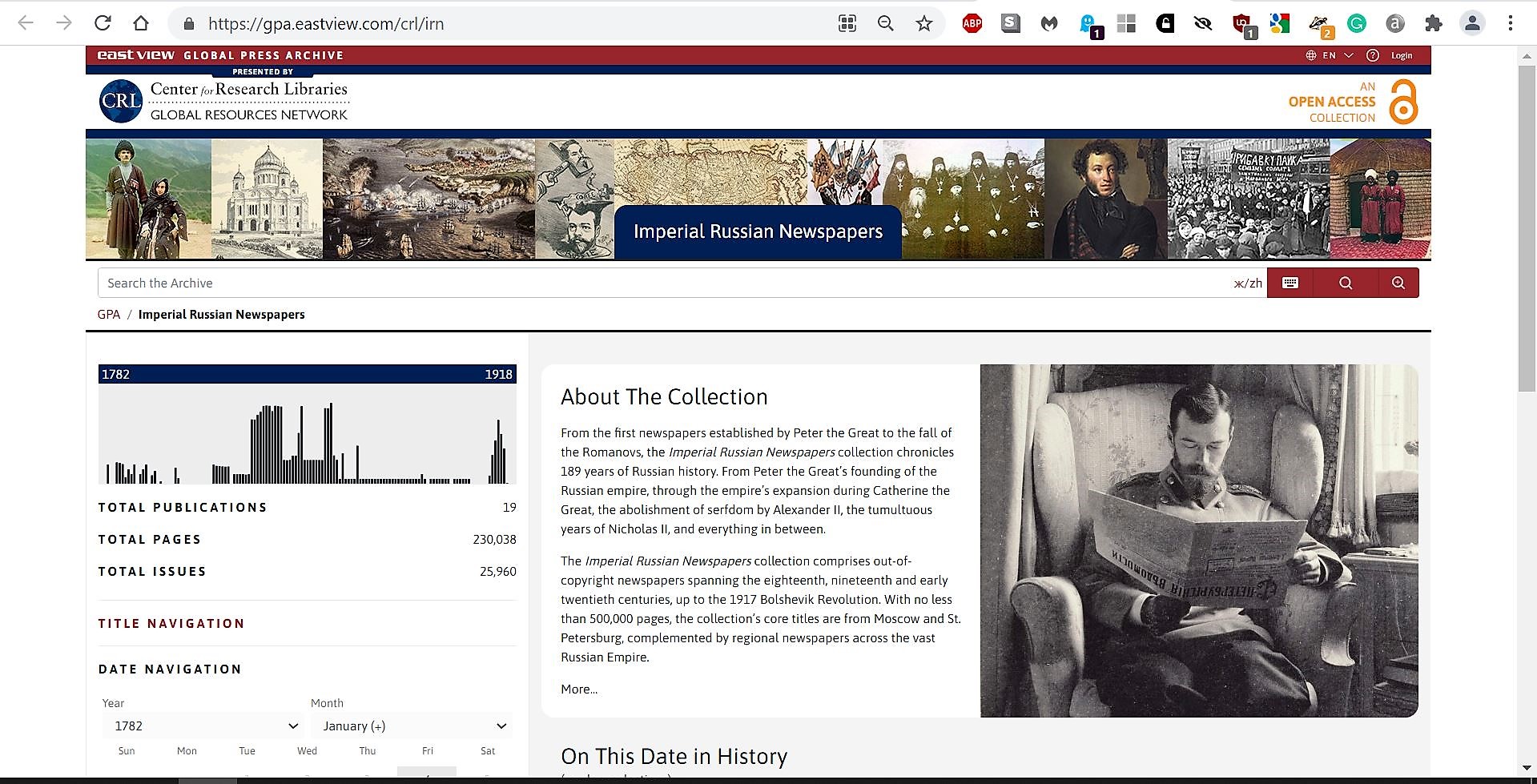Tag: russian empire
Library Trial of Russian Imperial Era Periodicals: a Bibliography and Reference Guide (ImPressDB)


Library Trial: Muslim in Russia Online (Brill Database)
UC Berkeley Library has set up a trial of Brill’s Muslim in Russia Online Database. The database trial will continue until February 1, 2025. You can access the trial here.
This collection examines the varied Russian Muslim population during the period of 1861-1918. It includes works by and about Muslims, highlighting the significance of this heritage as the history and spirituality of Muslims in Russia are being reexamined. A word of caution: Most of the periodicals in this database have been digitized from microfilms; thus, digitization quality is problematic. The OCR seems unchecked and automated “dirty,” so one has to look at the images.
Please access the database here: https://shorturl.at/M4IyT
Please see the screenshot below:
![Title: V mīri͡e musulʹmanstva:ezhenedelʹnai͡a, literaturnai͡a, politicheskai͡a i obshchestvennai͡a gazeta.<br />Date: 1911<br />
Date in Source: [1911-1912]](https://update.lib.berkeley.edu/wp-content/uploads/2025/01/Screenshot-2025-01-08-105604.jpg)
Date: 1911
Date in Source: [1911-1912]
Here are the key points about this database are highlighted below:
- Role in Russian State: Muslims played a crucial role in the creation of the multinational Russian state, completed with the annexation of Central Asia in the 1860s. By 1897, Muslims made up almost 11% of Imperial Russia’s population (14 million).
- Russian State Policy: Russian policy towards Muslims varied. Initially, there was forced Russification and Christianization. From Ekaterina II onwards, the policy shifted towards legitimizing Muslims. Under Alexander III, discrimination against non-Christians, including Muslims, increased.
- Early 20th Century: The early 1900s saw a rise in Muslim nationalism, fueled by religious reformism and liberal ideas. The First Russian Revolution (1905-1907) led to significant political changes, including creating the State Duma and civil freedoms.
- Union of Muslims of Russia: Formed in 1905-1906, this organization became the most powerful political body for Muslims until 1917, with branches across various regions.
- Intellectual and National Identity: Early 20th century saw more Muslim intellectuals and interest in national identity, heritage, and traditions.
- 1917 Revolutions: Muslim nationalist movements grew during the February and October Revolutions of 1917. Post-1917, Bolshevik policies negatively impacted Muslims’ religious freedoms.
- Muslim Press: Until 1905-1907, Muslim issues were poorly reported. The 1905 revolution led to a surge in Muslim publications. These periodicals covered a range of ideological perspectives and helped address Muslim problems.
- Unique Publications: Publications from 1861-1918 provide insights into Muslim life in the Russian Empire and their leaders’ perspectives. These works are valuable for understanding Muslims’ historical and spiritual heritage in Russia.
Open Access: Imperial Russian Newspapers (Center for Research Libraries)
The CRL and East View have opened the first release of content for Imperial Russian Newspapers, which is the fourth Open Access collection of titles digitized under the Global Press Archive (GPA) CRL Charter Alliance.
The Imperial Russian Newspapers collection, with a preliminary release of 230,000 pages, spans the eighteenth through early twentieth centuries and will include core titles from Moscow and St. Petersburg as well as regional newspapers. Central and regional ‘gubernskie vedomosti’ will be complemented by a selection of private newspapers.
The complete announcement is available on the CRL website at https://www.crl.edu/news/crl-and-east-view-release-open-access-imperial-russian-newspapers
Source: CRL-SEEMP
